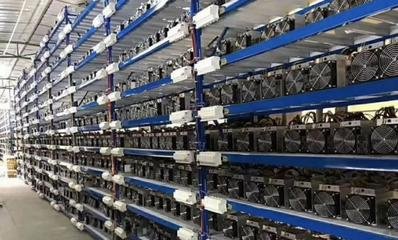In an era where the relentless surge of cryptocurrency continues to reshape financial landscapes, the mining industry faces a compelling crossroads. As energy consumption debates intensify, the fusion of solar power with mining machine hosting emerges as a groundbreaking solution. Solar mining machine hosting harnesses the boundless energy of the sun, marrying it with the computational demands of cloud-based mining. This innovative synergy not only slashes operational costs but also ushers in a more sustainable future for Bitcoin, Ethereum, Dogecoin, and other cryptocurrencies.
Mining machines—powerful, specialized devices designed to solve complex cryptographic puzzles—are the backbone of proof-of-work blockchains like Bitcoin (BTC). These rigs, ranging from compact ASIC miners to versatile GPUs, demand massive power inputs. Traditionally, mining farms rely on fossil fuels or grid electricity, often leading to exorbitant energy bills and significant carbon footprints. The advent of solar-powered mining farms revolutionizes this dynamic, offering miners the opportunity to enjoy both economic and ecological benefits.

The mechanism behind solar mining machine hosting is elegantly straightforward yet technologically sophisticated. Photovoltaic panels capture sunlight, converting it into electricity that directly powers mining machines. Surplus energy is typically stored in batteries or fed back into the grid during off-peak mining hours. This ensures continuous operation regardless of weather fluctuations, a crucial factor especially for mining farms situated in variable climates. The integration of smart energy management systems further optimizes power usage, dynamically allocating resources between solar input and grid backup.
Cloud mining, an increasingly popular alternative to individual hardware investment, amplifies this sustainability narrative. Users rent mining power from data centers that operate solar-powered rigs, eliminating the need to purchase, maintain, or host physical mining machines themselves. This model democratizes access to cryptocurrencies, allowing enthusiasts and investors to mine BTC, ETH, DOGE, and other altcoins without hefty upfront costs or technical hassles. Moreover, combining cloud mining with renewable energy sources propels the environmental responsibility of the entire crypto ecosystem.
Consider Bitcoin’s mounting energy consumption—comparable to that of some small countries. Critics often spotlight this as an Achilles’ heel, but solar mining farms demonstrate a path forward. By adopting solar power, miners can drastically reduce carbon emissions while bolstering network security through decentralized hash rates. Ethereum (ETH) miners, though gradually transitioning toward proof-of-stake, still rely heavily on energy-intensive mining setups. Solar solutions provide an interim bridge, supporting ongoing mining operations with greener alternatives.

Dogecoin (DOG), originally a meme coin, has matured into a widely traded digital asset with a passionate community and active mining infrastructure. Hosting Dogecoin miners powered by solar energy enhances not only the coin’s viability but also validates the scalability of renewable resources in maintaining robust, decentralized networks. Exchanges listing these tokens increasingly recognize the environmental narratives, incentivizing projects with sustainable mining practices.
The hosting component in solar mining machine hosting is paramount. Hosting providers manage the physical security, maintenance, cooling, and network connectivity of mining rigs in solar-powered data centers or farms. These services alleviate numerous operational burdens from smaller miners, who can instead focus on strategic trading or diversified investments. With professional hosting, miners enjoy consistent uptime—a critical metric in profitable mining—while leveraging green energy to gain competitive advantages amid volatile cryptocurrency markets.
Expanding on this, many mining farms strategically position themselves in sun-rich regions to maximize solar irradiance. Countries with abundant sunlight and favorable regulations, such as parts of the southwestern United States, Australia, and select areas in Asia, serve as hotbeds for solar mining operations. Here, miners capitalize on lower energy costs, robust infrastructure, and access to global exchanges that facilitate swift conversion of mined coins into fiat or alternative digital currencies.
Nevertheless, challenges remain. Initial capital expenditure for photovoltaic installations can be steep, and integrating these systems with high-demand mining rigs requires expert engineering. Battery storage solutions add further complexity and costs, though technological advances are steadily driving prices down. Furthermore, regulatory uncertainties surrounding cryptocurrency persist worldwide, affecting both local solar installation policies and mining legality. However, the environmental pressure and evolving market sentiment stimulate innovation, pushing the mining industry closer to a renewable energy revolution.
In conclusion, solar mining machine hosting stands at the confluence of technology, sustainability, and finance. It transforms the traditional mining paradigm by embedding renewable energy into the heart of crypto mining infrastructures. For Bitcoin miners wielding ASIC rigs, Ethereum enthusiasts harnessing GPUs, or Dogecoin supporters seeking eco-friendly mining options, solar hosting offers a promising pathway. Beyond profitability, it embodies a commitment to reduce crypto’s environmental imprint while sustaining the decentralized ethos intrinsic to blockchain technologies. As the cryptocurrency landscape matures, embracing solar-powered mining will be not just advantageous but imperative for long-term innovation and ethical growth.




Leave a Reply